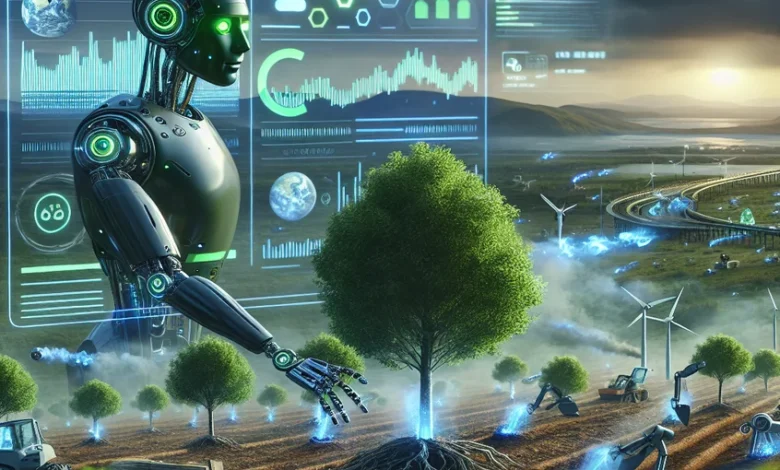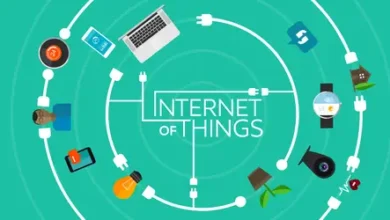How Artificial Intelligence is Accelerating Climate Change Solutions

In the face of an accelerating climate crisis, humanity is grappling with the urgent need to reduce greenhouse gas emissions, mitigate environmental impacts, and adapt to the rapidly changing planet. While the challenges are immense, advances in technology, particularly Artificial Intelligence (AI), offer promising avenues to provide climate change solutions. AI’s ability to process vast amounts of data, optimize complex systems, and uncover patterns invisible to the human eye positions it as a powerful tool in the global fight against climate change. From optimizing energy use and enhancing climate change solutions to revolutionizing agriculture and empowering conservation efforts, AI is increasingly at the forefront of climate solutions.
Understanding the Climate Change Challenge
Climate change is driven primarily by human activities such as the burning of fossil fuels, deforestation, and industrial processes. This is resulting in global temperature rises, altered weather patterns, and significant impacts on ecosystems and human societies. The Intergovernmental Panel on Climate Change (IPCC) has repeatedly warned that without drastic reductions in carbon emissions, the planet could face catastrophic consequences. This includes more frequent and severe weather events, increasing sea levels, and the displacement of millions of people. Addressing climate change requires a multi-faceted approach that includes reducing emissions, enhancing resilience, protecting natural ecosystems, and transitioning to sustainable energy sources. However, these efforts are complex and require the coordination of global resources, innovative technologies, and a deep understanding of the intricate interplay between human activities and the natural environment. This is where AI’s potential comes into play.
AI in Climate Modeling and Prediction
One of the most critical roles AI plays in addressing climate change is in the area of climate modeling and prediction. Traditional climate models, which rely on physical and mathematical representations of the Earth’s climate system, are essential for understanding how the climate will respond to various factors, such as increased greenhouse gas concentrations. However, these models are complex, computationally intensive, and often limited by the availability of accurate data.
AI enhances climate modeling by improving the accuracy and efficiency of these simulations. Machine learning algorithms, a subset of AI. They can analyze large datasets of historical weather patterns, ocean temperatures, and atmospheric conditions to identify patterns and make more accurate predictions about future climate conditions. These algorithms can also be trained to recognize the impact of specific variables. For instance carbon emissions or deforestation, on climate outcomes, enabling more targeted interventions.
AI-driven models can predict the likelihood and impact of extreme weather events, like hurricanes, floods, and droughts, with greater precision. This allows governments and communities to prepare more effectively, reducing the potential damage and saving lives. Moreover, AI can help identify “tipping points” in the climate system, thresholds beyond which certain changes become irreversible. This enables earlier and more decisive action.
Climate Change Solutions – Optimizing Renewable Energy Production
The transition to renewable energy sources, such as solar, wind, and hydropower, is crucial for reducing carbon emissions and combating climate change. However, the variability of renewable energy due to factors like weather conditions and daylight hours poses significant challenges for integrating these sources into the energy grid. AI is playing an important role in overcoming these challenges. AI can optimize the operation and maintenance of renewable energy systems, making them more efficient and reliable.
For example, machine learning algorithms can predict the output of solar panels or wind turbines based on weather forecasts and historical performance data, allowing for better energy management and storage. This predictive capability helps grid operators balance supply and demand, reducing the need for backup fossil fuel power and minimizing energy wastage. Furthermore, AI can enhance the design and deployment of renewable energy infrastructure. By analyzing geographical data, AI can identify the optimal locations for wind farms, solar arrays, and hydropower plants, taking into account factors such as local climate conditions, land use, and proximity to energy consumers. This can lead to more effective investments in renewable energy and accelerate the transition away from fossil fuels.
Climate Change Solutions – Enhancing Energy Efficiency
In addition to optimizing renewable energy production, AI is also revolutionizing energy efficiency across various sectors. These range from industry to transportation and buildings. Improving energy efficiency is one of the most cost-effective ways to reduce emissions and combat climate change. AI is enabling new levels of precision and control in energy management. For instance, AI can be used to optimize heating, ventilation, and (HVAC) systems in buildings, which are significant energy consumers. AI algorithms can adjust HVAC settings in real-time to maintain comfort while minimizing energy use. They do this by analyzing data from sensors, weather forecasts, and occupancy patterns,. This not only reduces emissions but also lowers energy costs for building owners and occupants.
In Industry, AI is being applied to optimize manufacturing processes, reducing energy consumption and waste. AI-driven systems can monitor equipment performance, predict maintenance needs, and adjust production schedules to maximize efficiency. This is particularly important in energy-intensive industries such as steel production, cement manufacturing, and chemical processing, where even small improvements in efficiency can lead to significant reductions in emissions. AI is also transforming transportation, another major source of greenhouse gas emissions. Autonomous vehicles, powered by AI, have the potential to reduce fuel consumption through more efficient driving patterns, optimized routing, and reduced traffic congestion. Additionally, AI is being used to optimize public transportation systems, encouraging more people to use low-carbon alternatives to private cars.
Climate Change Solutions – Revolutionizing Agriculture and Food Systems
Agriculture is a critical sector in the fight against climate change. It is both a significant contributor to greenhouse gas emissions, through practices such as deforestation, livestock production, and the use of synthetic fertilizers, and a sector highly vulnerable to the impacts of climate change. AI offers transformative solutions for making agriculture more sustainable and resilient.
One of the most promising applications of AI in agriculture is precision farming, which involves using data and AI algorithms to optimize agricultural practices. By analyzing data from soil sensors, weather stations, and satellite imagery, AI can help farmers make more informed decisions about when to plant, irrigate, fertilize, and harvest crops. This not only increases yields but also reduces the need for water, fertilizers, and pesticides, which in turn reduces emissions and environmental impact.
AI is also being used to develop more resilient crops that can withstand the effects of climate change, such as drought, heat, and pests. By analyzing genetic data and environmental conditions, AI can help identify the traits that make certain crops more resilient and accelerate the breeding of these varieties. This is crucial for ensuring food security in a warming world. In addition to crop production, AI is revolutionizing livestock management. AI-driven systems can monitor the health and behavior of livestock, optimizing feeding practices and reducing the environmental impact of meat and dairy production. For example, AI can help farmers identify the most efficient feeding strategies, reducing methane emissions from cattle, a significant contributor to global warming.
Empowering Conservation and Ecosystem Management
Protecting natural ecosystems is essential for mitigating climate change. Forests, wetlands, and oceans play a crucial role in absorbing carbon dioxide and regulating the Earth�s climate. AI is providing new tools for conservationists to monitor and protect these ecosystems more effectively.
AI-powered remote sensing technologies, such as drones and satellites, are being used to monitor deforestation, illegal logging, and habitat destruction in real-time. By analyzing high-resolution images and detecting changes in land use, AI can alert authorities to illegal activities and enable faster responses. This is particularly important in remote and inaccessible areas, where traditional monitoring methods are challenging.
AI is also being used to study and protect biodiversity, which is under threat from climate change. Machine learning algorithms can analyze large datasets of species distributions, genetic information, and environmental conditions to identify at-risk species and ecosystems. This information can inform conservation strategies, such as the designation of protected areas and the development of restoration projects.
In marine environments, AI is helping to monitor and protect coral reefs, which are highly vulnerable to climate change. By analyzing underwater images and video, AI can assess the health of coral reefs, detect signs of bleaching or disease, and track the effectiveness of conservation efforts. This is crucial for preserving these vital ecosystems. They support a rich diversity of marine life and provide essential services to coastal communities.
Supporting Climate Policy and Decision-Making
Effective climate action requires informed decision-making at all levels, from local communities to global institutions. AI is playing an increasingly important role in supporting climate policy and decision-making. It provides insights that are grounded in data and evidence. AI can be used to model the potential impacts of different climate policies. This helps policymakers understand the trade-offs and benefits of various approaches. For example, AI-driven models can simulate the economic, social, and environmental impacts of carbon pricing, renewable energy subsidies, or land-use regulations. This allows policymakers to make more informed decisions that balance economic growth with environmental sustainability.
AI is also being used to track progress toward climate goals. For instance, the targets set out in the Paris Agreement. By analyzing data from various sources, including emissions inventories, satellite imagery, and economic indicators. AI can provide real-time assessments of how countries and regions perform to reduce their emissions and adapt to climate change. This transparency is essential for holding governments and businesses accountable for their climate commitments. Furthermore, AI is empowering communities and individuals to take action on climate change. AI-driven platforms can provide personalized recommendations for reducing energy consumption, adopting sustainable practices, or supporting climate-friendly policies. By making climate action more accessible and actionable, AI is helping to build a global movement for a sustainable future.
Ethical Considerations and Challenges
While AI offers tremendous potential in the fight against climate change, it also raises important ethical considerations and challenges. One of the key concerns is the energy consumption of AI itself. Training large AI models, particularly those used in deep learning, can be highly energy-intensive and contribute to carbon emissions. It is essential to develop more energy-efficient AI algorithms and ensure that AI is deployed in ways that maximize its positive impact on the environment.
Another challenge is ensuring that AI-driven climate change solutions are equitable and inclusive. The benefits of AI should be accessible to all, including marginalized communities that are often most affected by climate change.





